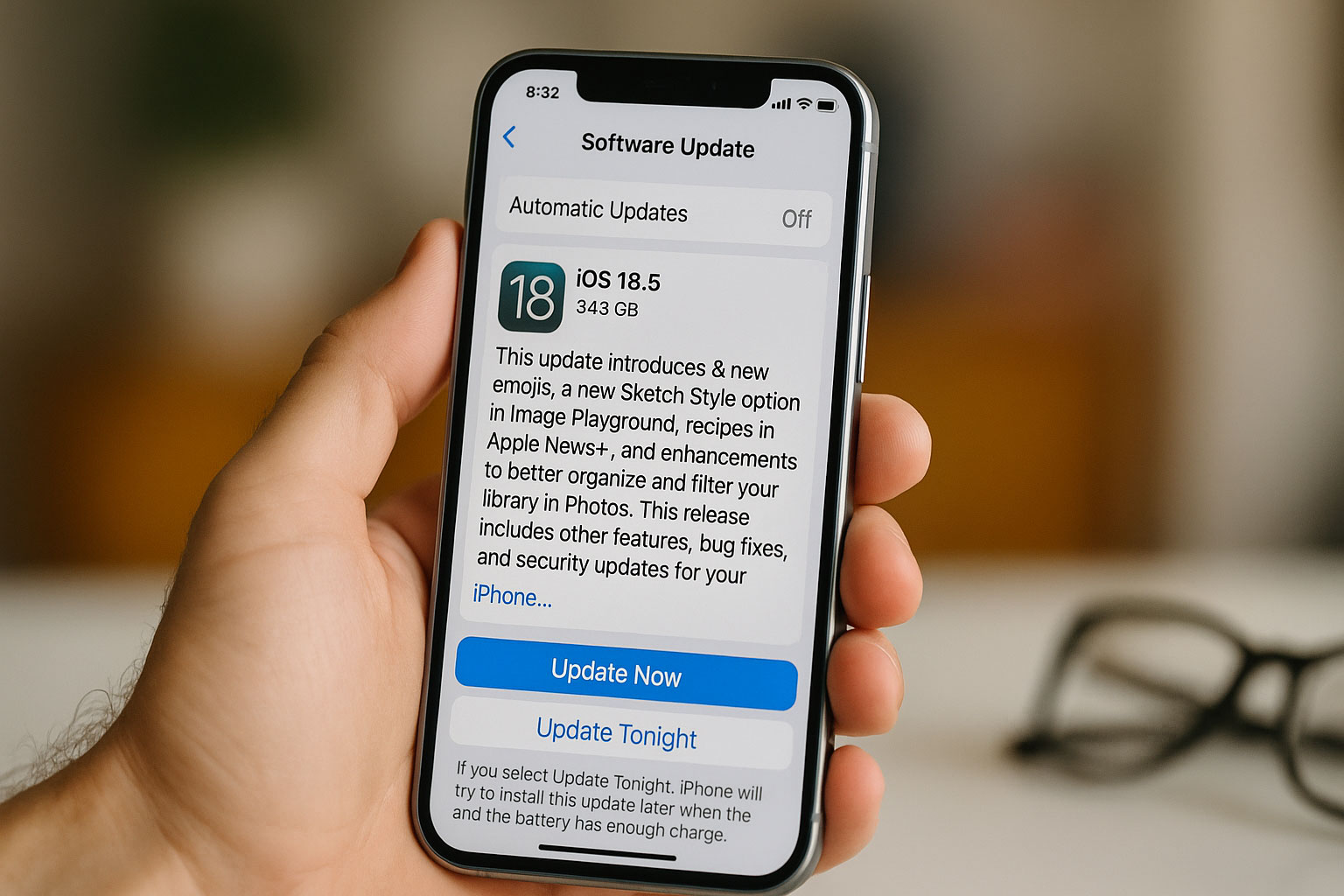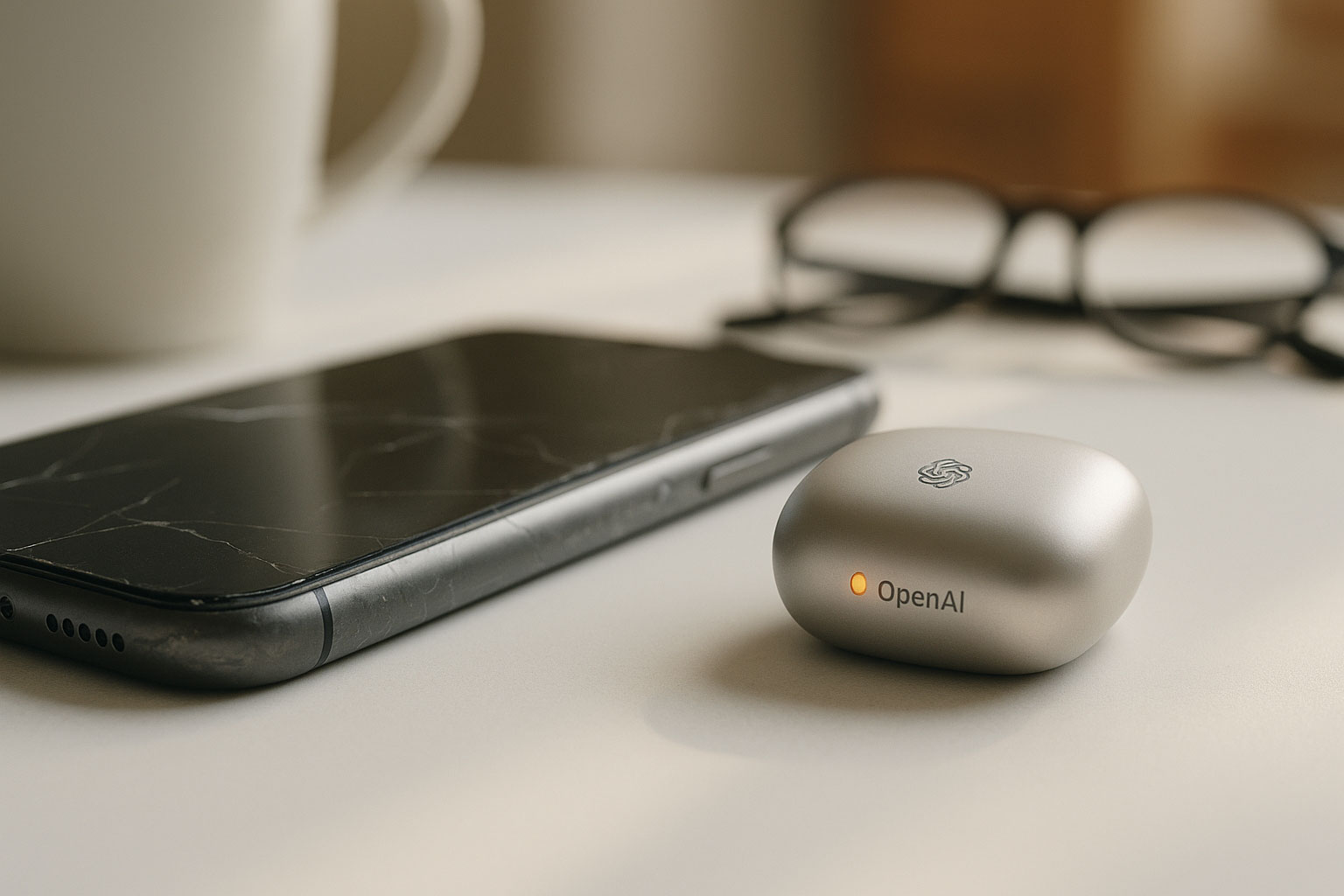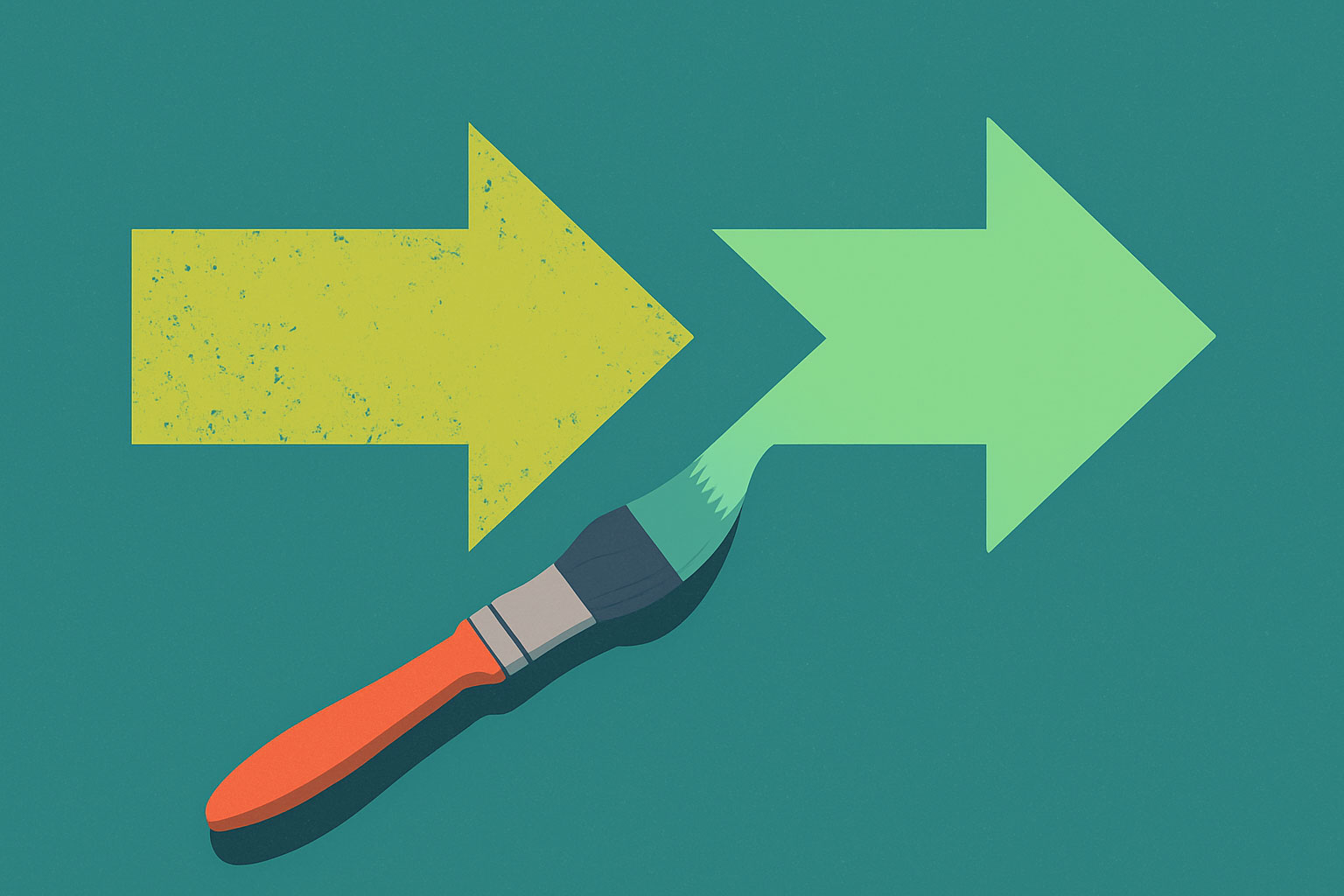While Google and OpenAI revolutionize technology, Apple’s biggest announcement is eight new emojis
Apple is falling behind in AI, and nothing illustrates this more perfectly than their latest iOS 18.5 update. There’s something deliciously ironic about watching my iPhone prepare to download 3.49 gigabytes of data, only to discover that the headline feature is eight new emojis. Including a “face with bags under eyes” – which perfectly captures how Apple investors must be feeling as they watch their once-invincible tech titan stumble in the artificial intelligence race.
Remember when Apple updates meant revolution? When Steve Jobs would stride across that stage and casually redefine entire industries? Now we get recipe updates for Apple News+ and “enhancements to better organize and filter your library in Photos.” Be still, my beating heart.
The AI Crisis: Apple Falling Behind While Others Soar
While Apple has been meticulously crafting the perfect tired-face emoji, the tech world has been experiencing nothing short of a paradigm shift. According to Bloomberg, insiders say continued failure to get artificial intelligence right threatens everything from the iPhone’s dominance to plans for robots and other futuristic products. That’s not hyperbole from some random blogger – that’s Bloomberg’s assessment of how severely Apple is falling behind in AI.

The numbers tell a brutal story. Apple’s stock is struggling while AI-focused companies soar. Morgan Stanley reports that roughly 50% of iPhone owners who didn’t upgrade to the iPhone 16 said they held onto their older phones due to Apple Intelligence delays. When half your potential customers are waiting for you to catch up on AI before they’ll buy your flagship product, you’ve got more than a problem – you’ve got an existential crisis.
Apple Intelligence: The Debacle That Keeps Getting Worse
Let’s talk about Apple Intelligence – or as I’ve come to think of it, Apple’s “Intelligence?” (question mark intended). The story of Apple falling behind in AI begins with Siri. Just before Steve Jobs’ death in 2011, Apple unveiled its voice assistant. At first, Siri felt like science fiction come to life. But within a few years, Google, Amazon, and other competitors had introduced voice assistants that felt far more advanced, while Apple’s struggled with basic comprehension.
Fast forward to 2025, and the situation has only deteriorated. The company promised Apple Intelligence would arrive in fall 2024. Then it got delayed. Then delayed again. “This has been a debacle ever since [Apple] released Apple Intelligence,” said Zeus Kerravala, founder and principal analyst of ZK Research. “If you think about it, even from the initial launch, it really wasn’t very clear what Apple intelligence was.”
Meanwhile, the promised smarter Siri – you know, the one that might actually understand what you’re saying – has been pushed back yet again. At this rate, my grandchildren might see it. Maybe. (For more on Siri’s troubled history, see our analysis: Why Siri Never Lived Up to Its Promise.)
Google and OpenAI: The Empire Strikes Back
While Apple is falling behind in AI, their competitors aren’t just catching up – they’re redefining the entire industry. Two announcements in particular stand out as game-changers.
The Ive-Altman Partnership: Reimagining AI Hardware
Picture this: Jony Ive – yes, the same Jony Ive who designed the iPhone – has joined forces with Sam Altman to create the next generation of AI devices. In a nine-minute video filmed at Cafe Zoetrope, the two visionaries outlined their plans for AI companions that will fundamentally change how we interact with technology.

According to The Washington Post, Altman told OpenAI staff that they aim to ship 100 million AI “companions.” He described it as “the chance to do the biggest thing we’ve ever done as a company here.” Not smartphones. Not tablets. AI companions that will “see your whole life” and understand context in ways current devices can’t imagine.
The scale is staggering. OpenAI is paying $6.5 billion to acquire io Products – that’s billion with a B. When the creator of ChatGPT drops that kind of money on a hardware startup led by the designer of the iPhone, you know the industry is about to be transformed.
Google’s Veo 3: Hollywood in Your Pocket
But if the Ive-Altman partnership represents the future of AI hardware, Google’s Veo 3 represents something perhaps even more profound: the complete democratization of video production. This is just one example of how Apple is falling behind in AI – while they update emojis, Google is making filmmakers out of everyone.
Unlike OpenAI’s Sora, Google DeepMind’s Veo 3 can include dialogue, soundtracks, and sound effects. The model excels at following complex prompts, abides by real-world physics, offers accurate lip-syncing, and generates people with lifelike features. The results are so convincing that most users can’t distinguish them from real footage.
I’ve spoken to video editors and cinematographers who are genuinely concerned about their futures. But here’s the crucial point: you still need creativity. You still need a storyline, a narrative, an understanding of filmmaking. Veo 3 is an unbelievable tool, but that’s what it is – a tool. The craft is still worth learning because someone needs to know what story to tell and why it matters.
What’s truly terrifying? This is Veo 3 today. If we’ve gone from obviously fake videos to photorealistic in just two years, where will we be in 2030? And here’s the kicker: Veo 3 was just one announcement out of over 100 things Google unveiled at I/O 2025. The Empire isn’t just striking back – it’s launching a full assault while Apple is falling behind in AI, still polishing emojis.
Why Apple’s Traditional Strategy No Longer Works
Apple had every advantage. They had the ecosystem, the hardware expertise, the user base, and God knows they had the money. But we’ve seen this movie before. Apple also had the music industry in the palm of its hand. iTunes, paired with the iPod, took Apple beyond the stratosphere. Until Spotify proved how easy it was to disrupt even Apple’s most dominant businesses. Today, iTunes is a relic. (Read more: How Spotify Disrupted iTunes.)
Apple has been working on Apple Silicon for 17 years. They revolutionized mobile computing with custom chips. They created neural engines before most people knew what neural networks were. They had all the pieces. But somewhere along the way, they got comfortable. They got cautious. They got corporate.
According to Stratechery, AI is inherently messy. It hallucinates, fails, learns, and improves. That messiness is antithetical to Apple’s DNA. Apple doesn’t do messy – they do pixel-perfect. But AI doesn’t “just work” – and Apple simply doesn’t know how to ship imperfect.
The Coming Unbundling of Apple’s Ecosystem
What we’re witnessing isn’t just Apple falling behind in AI. We’re watching the potential unbundling of the most successful tech ecosystem ever created.
Think about it: If Ive and Altman succeed in creating AI companions that truly understand context and user needs, why would you need Siri? If Google’s AI can generate any video content you can imagine, why would you need Final Cut Pro? If AI agents can handle complex tasks across any platform, why would you need iOS?
The moat that Apple spent decades building suddenly looks less like a fortress and more like a prison. A very pretty, very expensive prison with excellent build quality, but a prison nonetheless.
Apple’s Strategy Crisis: When “Wait and See” Fails
Yes, Apple is falling behind in AI dramatically. But this has been their strategy before – they’re rarely first movers. The iPod wasn’t the first MP3 player. The iPhone wasn’t the first smartphone. They wait, watch, then execute better than anyone else.
This time feels different. They’ve been caught completely off guard. Reports indicate factions have formed within the company, all with different philosophies about where to go next. The result? A company that feels rudderless, reactive rather than visionary.
Add the volatile political climate and on-again, off-again tariffs, and you have a perfect storm. Yes, they have massive cash reserves. But when you lose your audience, it’s sometimes impossible to get them back. When half your customers are waiting for AI features before upgrading, that’s not just a product problem – it’s a crisis of confidence.
The $3 Trillion Question About Apple’s AI Future
Apple is still worth over $3 trillion. They’re still selling millions of iPhones. But greatness isn’t measured in market cap – it’s measured in the ability to see around corners, to bet big on the future, to risk failure in pursuit of revolution.
Morgan Stanley analyst Erik Woodring lowered his price target on Apple from $275 to $252, citing concerns that Siri delays will impact iPhone upgrade cycles through 2026. When Wall Street starts pricing in your AI failures two years out, the message is clear: Apple is falling behind in AI, and everyone knows it.
The tragedy? This was preventable. In 2018, Craig Federighi announced they’d poached John Giannandrea from Google to lead AI efforts. Seven years ago, they saw this coming. They made moves. But somewhere between vision and execution, something went terribly wrong.
What Apple Should Have Done Differently
Apple should have treated AI like they treated the transition from PowerPC to Intel, or from Intel to Apple Silicon. Total commitment. Massive resources. Willingness to cannibalize their own products. Instead, they treated it like a feature update – a new emoji pack.
Apple is now preparing to allow developers to write software using its AI models. Too little, too late? When your big AI strategy announcement comes after competitors have already redefined the industry, you’re not leading – you’re desperately trying to catch up.
The View from 2025: Is This Apple’s Kodak Moment?
As I write this, my iPhone sits on my desk – beautiful hardware running increasingly antiquated software. It’s like owning a stunning vintage car in an age of flying vehicles. Sure, it’s pretty. Sure, it works. But it’s not the future.
The future is being written in a San Francisco cafe where two visionaries plot to ship 100 million AI companions. The future is being generated 8 seconds at a time by Veo 3, as creators manifest imagination directly into reality. The future is messy, imperfect, and absolutely terrifying in its potential.
And Apple? Apple is falling behind in AI so badly that their biggest announcement is a tired-face emoji. How perfectly, tragically fitting.
The Bottom Line: Can Apple Recover?
Don’t get me wrong – Apple isn’t disappearing. They’re too big, too rich, too entrenched to simply vanish. But being too big to fail isn’t the same as being too good to beat. And right now, they’re being beaten. Badly.
The company that once told us to “Think Different” seems to have forgotten how. The company that created entire industries is now struggling to keep up. The company that gave us the future is now peddling nostalgic updates to increasingly skeptical customers.
Maybe this is temporary. Maybe Apple will surprise us at WWDC 2025. Maybe that new Siri will be so revolutionary that we’ll look back on this as the darkness before dawn.
Or maybe we’re witnessing the exact moment when the torch gets passed. When the rebels become the establishment. When the disruptors become the disrupted. When Apple falling behind in AI becomes not just a temporary setback, but a permanent reality.
Time will tell. But for now, I’ve got an iOS update to install.
3.49GB for eight new emojis.
If that’s not a metaphor for everything wrong with Apple right now, I don’t know what is.
What do you think? Is Apple’s AI winter temporary, or are we watching the beginning of the end of their dominance? Let me know in the comments. And yes, I’ll probably use that new tired-face emoji when I reply.


